Basement Waterproofing Services
Request a Call Back
Hero Request Form
Skilled WATERPROOFING at Your Service
Brilliant Basement Waterproofing LLC is a trusted name for basement waterproofing. If you have a finished basement that needs waterproofing, we can complete the job without demolition. We also offer waterproofing services for Old stone foundations. You can rest easy knowing your walls will be left intact.
Are there cracks on your basement walls? Please don't ignore them! They can lead to severe and costly repairs. Water can seep in through the cracks, causing damage to your walls. Reach out to our skilled team before it's too late. We can repair cracks in your basement walls and remove any standing water. Call (860) 598-8091 if in CT, RI, or MA. today for more information about our basement waterproofing.
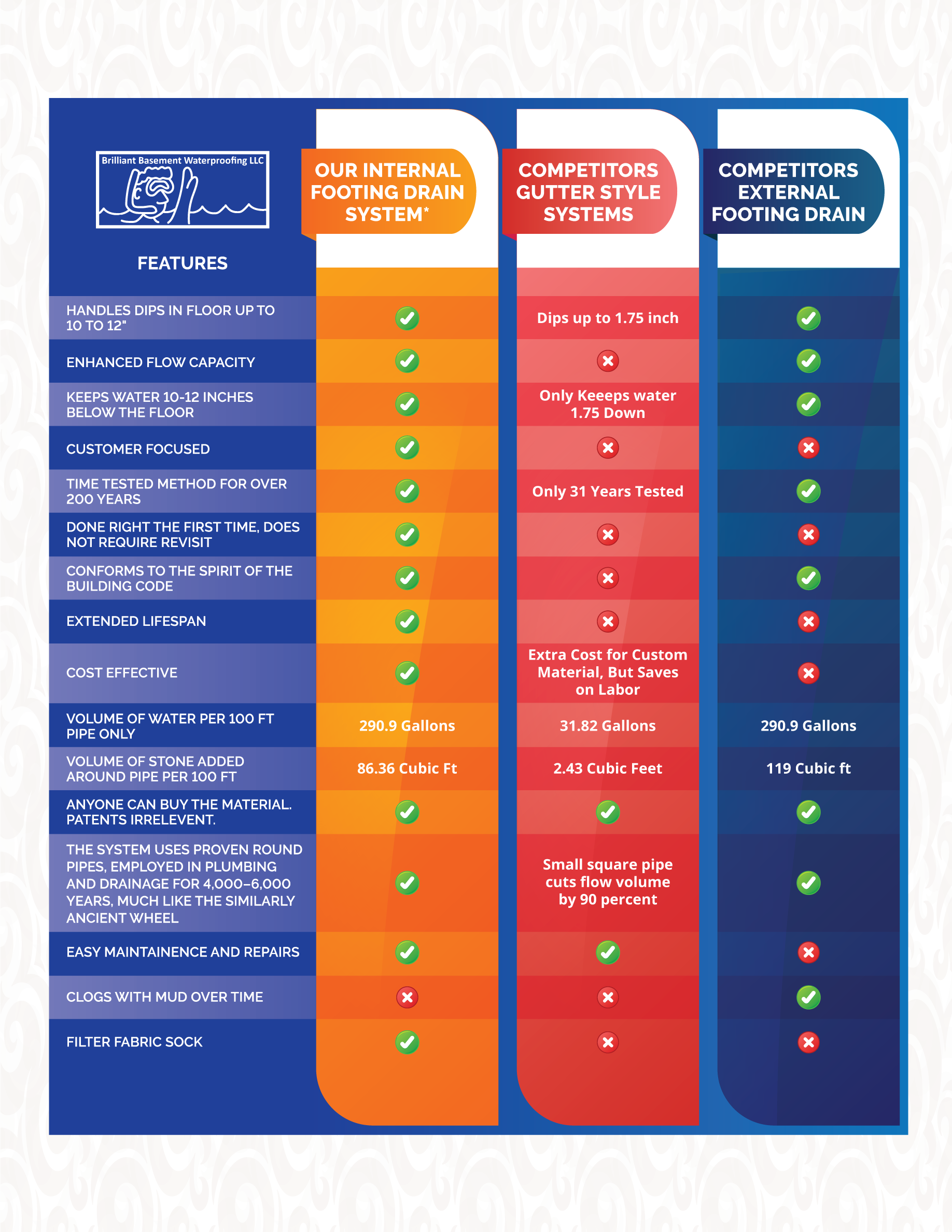
Connecticut, Rhode Island,
and Massachusetts: (860) 598-8091
Our approach to basement waterproofing relies on a comprehensive custom solution tailored to the unique needs of each home individually.
Our system is based on the same timeless principles of drainage and waterproofing. It’s the same system that building inspectors want to see—the one designed and recommended by engineers. Our hands-on experience has led us to only changing one aspect of the timeless principles while preserving the Spirit of the building code as much as possible. That key aspect is that instead of installing the external footing drain outside of the house, we install the internal footing drains within the house. With this small but significant change, we have found that all issues with the outside system are resolved. The drains stay clean and open for water to flow away into the sump pump or gravity drain easily.
What Is an Internal Footing Drain System?


An internal footing drain system is a specialized waterproofing solution designed to manage and redirect water away from your foundation. Installed within the basement or crawlspace, our system captures water that seeps through walls and floors, channeling it into a dedicated drainage network and safely out of your home.
Key Benefits
- Superior Waterproofing: Keeps your basement dry year-round by intercepting water before it can pool and cause damage.
- Protects Structural Integrity: Prevents soil saturation and hydrostatic pressure that can lead to cracks and foundation settlement.
- Improves Indoor Air Quality: Reduces humidity levels, deterring mold, mildew, and musty odors for a healthier living environment.
- Low Maintenance
How It Works
- Installation: A trench is cut along the perimeter of the basement floor adjacent to the foundation walls.
- Drainage Channel: A perforated drain pipe surrounded by gravel is placed in the trench to collect water.
- Collection Point: The drain pipe leads to a sump pit equipped with a high-efficiency pump.
- Discharge: Water is pumped away from your foundation to a safe discharge point, such as a storm sewer or daylight exit. Sometimes, the pump can be eliminated with a gravity drain.

A pump is used to collect the water from our internal footing drain system and pump it away from the house.

A Gravity drain is a lost art for many companies today. We utilize the gravity drain principles to eliminate the sump pump, which has many advantages in your system.
Why are internal drains better than External Drains?
- Cost-Effective: Less expensive to install and maintain than external drains, with no excavation needed.
- Easy Access: Installed inside, allowing simple inspection and repairs without disrupting landscaping.
- Durable: Protected by six to 10 feet of concrete on walls. The walls sit on a footing protecting them on the side. Then, a concrete cap is placed on top to almost completely surround the drain with protection from freeze-thaw cycles, roots, and soil movement for long-lasting performance.
- Ideal for Retrofits: Perfect for existing homes, addressing water seepage effectively.
- Efficient Water Management: Captures and redirects water with a sump pump, preventing basement flooding.
Choose internal footing drains for a reliable, affordable, and low-maintenance solution to keep your basement dry!
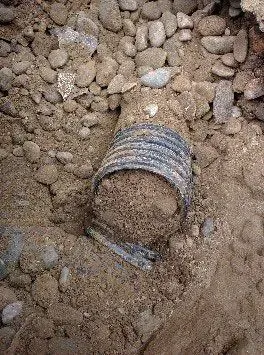
To the left is a footing drain installed on the outside that has filled with mud and dirt. An external drain is covered with 6 to 8 feet of dirt, which makes it susceptible to these types of issues.
Let’s not reinvent the wheel; things like pizza, the wheel, or the pipe are all things that have been made perfect since the beginning of time. Okay, maybe a square pizza is okay, but that’s different. Round plumbing pipes are still used in almost all drainage projects across the country every day.
The first water pipes were discovered near the Indus River in what is now India around 4000 B.C., over 6000 years ago!
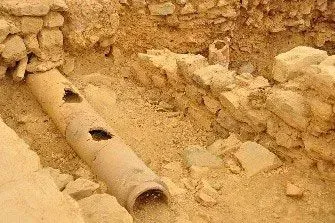
Our system utilized principles from the French Drain, an incredible design that first began to be widely adopted in 1859.
The French drain, a gravel-filled trench for water redirection, was formalized by Henry Flagg French in his 1859 book, Farm Drainage. Similar drainage systems existed in ancient cultures, but the French design became widely adopted.
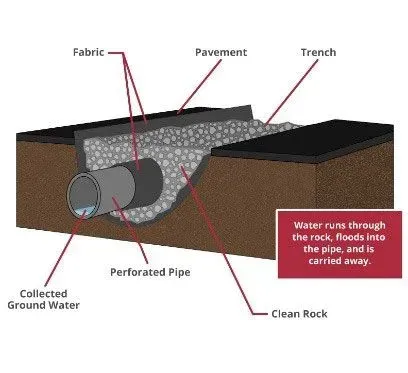
Why Round Pipes Are Best for Water Flow
- Maximum Flow Efficiency: Circular pipes offer the largest cross-sectional area for a given perimeter, allowing more water to flow with less material.
- Reduced Friction: The smooth, curved surface minimizes turbulence and drag, ensuring smoother and faster water flow.
- Even Pressure Distribution: Round pipes evenly spread water pressure, enhancing durability and reducing stress on the pipe walls.
- Hydraulic Performance: Circles align with natural fluid flow patterns, minimizing energy loss and maintaining consistent velocity.
- Strength and Practicality: Circular pipes are easy to manufacture, inherently strong, and resistant to external pressures, making them ideal for plumbing and engineering.
This is a common system used by some businesses that have attempted to reinvent the footing drain system. Notice it is much smaller and has very little flow capacity; additionally, there is very little stone used around the pipe.

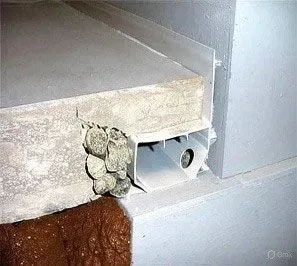
Our system utilizes the same round pipe that has been used for 6000 to 8000 years. We also use the French drain system, which was discovered in 1859 by Henry.
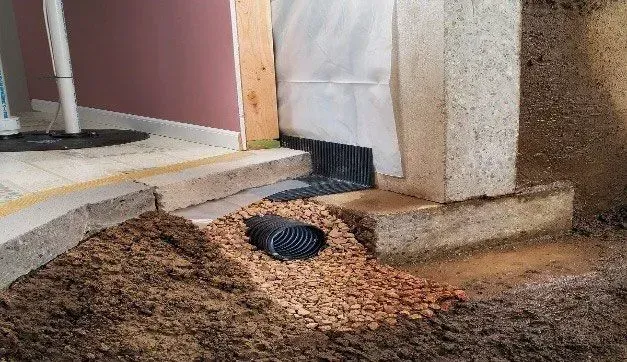
Why Knitted-Sock Pipes for Drainage
- Blocks Sediment: Knitted-sock geotextile prevents sand and silt clogging, ideal for sandy or silty soils.
- Boosts Water Flow: Up to 29% higher inflow than sand-slot pipes, enhancing drainage efficiency.
- Cost-Effective: Durable and reliable, outperforming cheaper alternatives in mixed soils.
- Proven Performance: Studies show 12-20% better inflow and lower head loss.
- Perfect for Tough Soils: Prevents blockages in low-clay, problematic soils.
We use a knitted sock for the reasons outlined above.
If you look closely, you can see the little slits or perforations around the pipe.
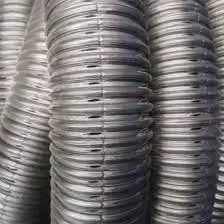

Why Crushed Stone Matters in Your Footing Drain
Crushed stone is a key component in an internal footing drain system, ensuring effective water management and protecting your home from moisture damage.
Key Benefits of Crushed Stone
- Improves Water Flow: Its porous structure allows water to flow freely into the drain pipe, preventing clogs.
- Filters Debris: Traps soil and silt, keeping the pipe clear and reducing maintenance.
- Protects Pipes: Acts as a barrier, shielding pipes from soil pressure and damage.
- Boosts Durability: Enhances system longevity, saving you from costly repairs.
Our Commitment to Quality
We use high-quality, uniformly sized, and washed crushed stone to maximize permeability and durability, ensuring your drainage system performs reliably for years.
Safeguard Your Home
A well-installed footing drain with crushed stone prevents basement flooding, mold, and structural damage. Contact us today for a consultation!
Risks of Delaying Waterproofing
Failing to address basement moisture can lead to serious, costly issues:
- Structural Damage: Prolonged water exposure weakens concrete and mortar, causing cracks, wall bowing, and foundation settlement.
- Mold & Mildew Growth: Persistent dampness creates an ideal environment for mold, which can spread rapidly and damage building materials.
- Poor Indoor Air Quality: Mold spores and musty odors can aggravate allergies and respiratory problems.
- Decreased Energy Efficiency: Wet insulation and walls lose R-value, driving up heating and cooling costs.
- Reduced Property Value: Visible water damage and mold scare away potential buyers and trigger expensive remediation demands.
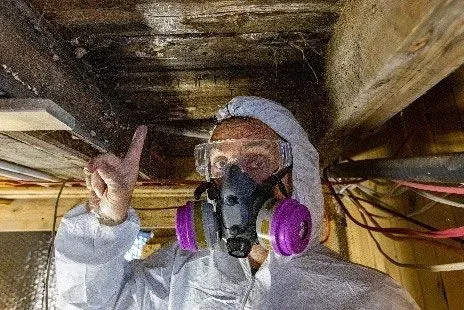
Waiting to install your system could result in Mold growth. Mold is very unhealthy for people, and mold can also eat away at and rot your house's framing system.






































































































































Share On: